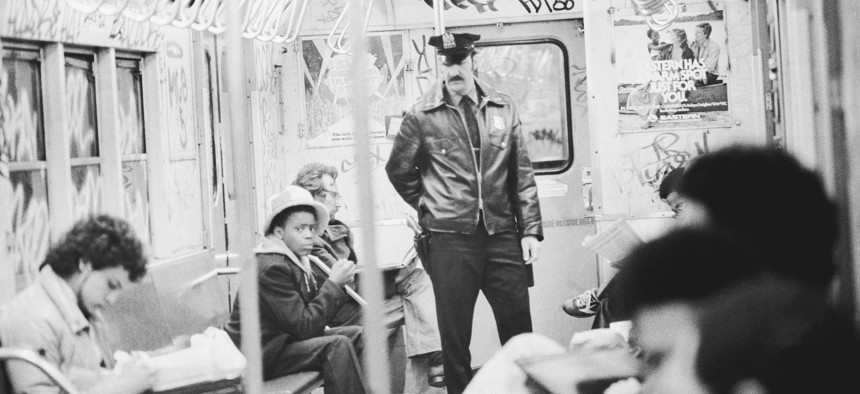Editor's Note
Editor’s note: Today’s New York City isn’t the hell I knew 50 years ago
Rhetoric would have you think it was falling back on hard times.

A policeman on duty on a New York City subway train in the 1970s Bettmann, Getty Images
I’ve never forgotten the impression 1970s New York City made on me as a kid growing up in Manhattan. I remember how people leaving a Broadway show around 11 p.m. would run into cabs terrified of the creeps who hung out nearby and how sleazy porn theaters defined 42nd Street. Subways, covered in graffiti and filth, never felt safe – never. Grand Central Terminal was dirty and suffering from years of neglect. It was even almost torn down like the original Penn Station. Parks were off limits because of muggers, alcohol and drug users. Burned-out vacant lots turned neighborhoods like the South Bronx into wastelands.
My parents were strict about not letting me out by myself until they felt I was old enough. I wasn’t optimistic times would change by the time I was a teenager and young adult, but they did get better and the city has not gone back to those dark days. Jeff Coltin’s cover story this week highlights “Gotham: The Fall and Rise of New York,” a documentary that relives those despairing moments and credits former Mayor Rudy Giuliani, conservative policy, cooperation and old-school ingenuity for saving the city from those problems of the past. It argues for using the same approach to save the city from its current problems.
But rhetoric has made the false perception that New York is falling back on similar hard times, and there’s no shortage of policymakers who have jumped on this bandwagon. Progressives can argue their more liberal policies have also made a difference. It’s why state Sen. Julia Salazar and Assembly Member Latrice Walker argue in their op-ed in this week’s issue against rolling back bail reform. So, be wary of listening to stories of doom and gloom in today’s polarized landscape. It’s hard to have too much faith – or trust – in one side of the political spectrum that runs on a bogus story.